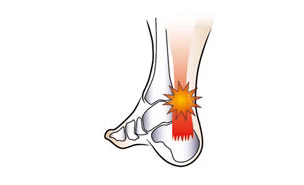Achilles Tendonitis
Footlogic: The science of walking comfort
Articles in this section
Symptoms:
Achilles Tendonitis (also referred to as Achilles Tendonpathy) is presented by a consistent, sharp pain just above the back of the heel. Redness and swelling may be present and often the affected area is tender to touch. In addition, the patient may display limited ankle flexibility.
Causes:

Tendons are made of tough, replete connective tissue, and join muscles to bones. Tendons consist of closely packed parallel bundles of callogen fibres. Tendons aren’t very flexible but are strong; they are resistant to extension. The Achilles tendon is highly susceptible to over-stretching and strain. If this strain is improperly cared for it could result in a chronic injury with repeated strain in this area an athlete can easily develop tendonitis. The condition will often arise suddenly with no warning and is often due to overworking the area.
Treatment:

The use of Footlogics heel lifts in the shoes will benefit your patient as it will reduce the tension on the tendon. For more severe cases an air-walking brace can be worn to immobilise the joint and to prevent stretching of the Achilles during walking. Strapping can also be used to prevent over-stretching of the Achilles tendon. Other treatment options include rest/reduced activity and ice therapy. Anti-inflammatory medication can be used to ease pain and lessen the amount of fluid in the area.

